Update 2021
Angela Tucker, Katie Biron, Kara Andersen, and I created this 3-minute animated explainer video under the auspices of Amara for the information below about the Open Adoption Grid, which was revealed in 2013 through the post below.
How Shall We Think of Open Adoption?
I bet if you asked a bunch of people who know about adoption what open adoption is, you would get variations on the theme of contact, that there is a continuum of contact, and that each adoption will find its way on to a point on the continuum. On one end might be a fully closed adoption, meaning no contact and no identifying information. At the other end people might place full openness — adoptive and birth parents treating each other as extended families.

Seems kinda flat, no?
But as we move into the third decade of open adoptions, I submit that we should stop using contact as our measure. Why?
Because Contact ≠ Openness.
Contact is not the same as openness.
Further, because of the need to consider contact and openness separately, we need a better tool than a spectrum. How about a grid? A grid that takes into account a measure other than contact — the level of open-heartedness on the part of the parents of the child.
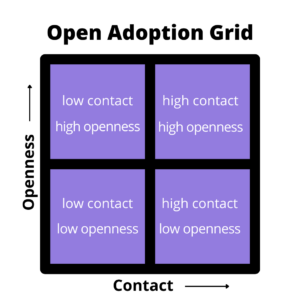
Let’s look at each of the quadrants:
Quadrant 1
- Traditional Closed Adoption. Not only is there very little contact or identifying information available to the child, but the adoptive parents are ill-equipped to deal with adoption openly. They may have unresolved grief left over from their infertility struggles. Perhaps they were counseled to act as if their child were born to them. They may not be comfortable having tough conversations and confronting “icky” feelings about adoption, either theirs or their child’s as she grows and advances cognitively. This quadrant may be the most crippling for a child to grow up in, the least conducive to integrating her identity from both her sets of parents.
Quadrant 2
- Obligatory contact. Here is where there is contact with birth family, maybe through exchanges of photos, emails or even meetings. Parents here may say things like, “We follow our open adoption agreement and send monthly updates and pictures.” or “We’re not afraid to let the birth parents know where we live.” But what’s lacking in Quadrant 2 is what Jim Gritter calls the Spirit of Open Adoption. Adoptive parents may harbor feelings of guilt, envy, distaste or even superiority about their child’s birth family, either consciously or subconsciously. (By no means am I saying that all do, but rather the observation that some do.) These adoptive parents may enjoy having all the power they hold in the relationship rather than inviting the first parents to co-create their open adoption relationship. Because of the lack of openness here, the child is still at a disadvantage, feeling split between her clan of biology and her clan of biography, for there is quite a gap between them.
Quadrant 3
- Openness with discernment. This box is at play in many foster and international adoptions, as well as some domestic infant adoptions where distance or birth family availability is a factor. It involves low contact but high openness. Logistics and safety issues may make actual contact not possible or unwise, but the parents in Quadrant 3 still parent with openness. They are able to deal with their own emotions about their family-building story mindfully, and they are able to open their hearts to their child as she processes her adoption story and integrates her identity. She is in a good position to have the space and support from her parents to do just that.
Quadrant 4
- Extension of family. Here is where the birth family is considered extended family, both in contact and in openness. This relationship may be no different than one with a beloved uncle, sister-in-law or grandmother (or even a relative not so beloved!). The relationships are child-centered and inclusive. The child is claimed by and able to claim both her clans, thereby helping her integrate all her pieces as she grows through her toddler and school years, through her tweens and teens and into adulthood. She is not pulled to choose or rank one family over the other and she is therefore not split — she is free to integrate herSelves and pursue wholeness in her identity.
Which Quadrant is Best?
What matters as we set our parenting GPS isn’t where we are left-to-right on this grid. After all, we have only partial control over the level/type/amount of contact. What matters more is the elevation we operate at. The openness required by and afforded to Quadrants 3 and 4 is likely to foster healthier relationships than mere contact in Quadrants 1 and 2. Aim high!
Adopting and adoptive parents, where would you plot yourselves? Consider both aspects of open adoption — contact and openness — as you build and sustain a child-centered adoption constellation.
Update
Feedback from some adoptive parents indicated that since they can’t fully control the level of contact with birth family, why should they be penalized for being in a less-than-ideal quadrant?
First of all, no one is being penalized. In Adoption World, it’s better to deal with What Is rather than what we wish things would be. The quadrants are meant to self-assess in a nonjudgmental way. I counsel adoptive parents to focus on openness — what they CAN control — over contact, which they only partially control. Quadrants 3 and 4 are where the benefits of openness in adoption exist.
One family may have open adoption relationships in more than one quadrant, based on differing situations with birth family members for each child.
A reader pointed out that plotting can change over time, as contact and openness can both be fluid measures.
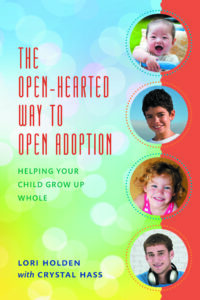
Lori Holden, mom of a young adult daughter and a young adult son, writes from Denver. She was honored as an Angel in Adoption® by the Congressional Coalition on Adoption Institute.
Her first book, The Open-Hearted Way to Open Adoption: Helping Your Child Grow Up Whole, makes a thoughtful anytime gift for the adoptive families in your life. Her second book, Standing Room Only: How to Be THAT Yoga Teacher is now available in paperback, and her third book, Adoption Unfiltered, is now available through your favorite bookseller!
Find Lori’s books on her Amazon Author page and catch episodes of Adoption: The Long View wherever you get your podcasts.


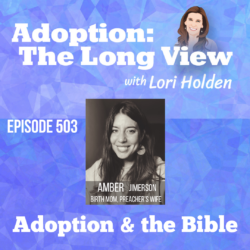
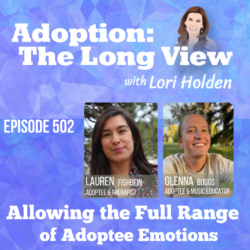
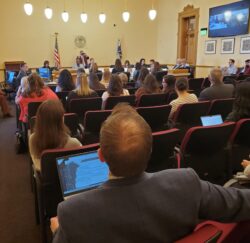
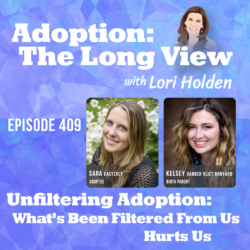
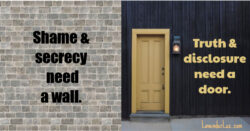
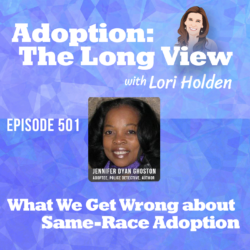
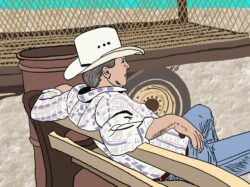
65 Responses
I love love love the grid. And how you point out those shades that come combining openness with contact.
Congratulations! A well-deserved honor!!
Soooooo excited for you to be a part of the gala!
What a great way to describe things!! And congrats! I wish I lived closer.
Great post.
That grid is such a great way of looking at this issue! As foster parents people always ask me if we have “contact” with the kids’ birth families, and I always find myself wanting to expand on that discussion – telling you how often we happen to see their birth families doesn’t in any way describe the kind of relationship we have with them.
So true! There are so many components to contact — breadth, depth, frequency, intimacy, etc. Each constellation must figure out its priorities and build their relationship accordingly.
Like most relationships, the ones we create in open adoptions are infinitely complex.
I love the grid. Not only because it really calls out that contact does not equate to openness, but also because it can be applied to so many other situations. I’m sitting in a coffee shop and still reflecting on a bitter conversation from a woman who is clearly sharing custody of her children with her ex. She complained bitterly and loudly about this arrangement and after reading your post, it made me wonder about the children and how whether they were struggling with feeling they needed to chose parents.
Anyway, I think this is a great post! And congratulations on the honor!! I’m sure you’ll be awesome.
I think openness in adoption has a lot in common with families going through divorce. I bet that conversation was hard to hear 🙁
Congratulations on your well-deserved award! I hope you have a great time attending the Gala!
Your grid totally appeals to the math nerd in me – I love anything in a quadrant! I think it gives a much better representation of all the possibilities of adoption than the continuum too…
Lori,
So thrilled for your award and keynote speaking spot. I love the grid – one of you many posts that has so much thought behind it and provokes so much thought in reading it.
This grid focuses on the adoptive parents’ attitudes. What about the birth parents’ attitudes? There are adoptive parents who would love to have meaningful contact with their children’s birth parents, but the birth parents are unable or unwilling to reciprocate. Birth parents don’t automatically know how to navigate an open adoption anymore than adoptive parents do. However, it seems that adoptive parents who want openness seek out information about it. There doesn’t seem to be a lot of support or information about openness that is centered on birth parents. That could just be my perception, of course. Maybe, in the first box, the birth parents are the ones who aren’t capable of dealing with adoption. Contact is too much, so they shut down, for example.
I appreciate that adoptive parents have more control in open adoption relationships, but birth parents do have control over their actions and attitudes. I think their contributions, or lack thereof, need to be reflected in the grid.
Also, what does “high contact” mean? Is it about the number of times one contacts another person in a year? Is it the type of contact – visit, letters, phone calls, etc.? Is it how meaningful the contact is? For example, the families get together only once a year but they usually rent a house on the beach and have a grand ol’ time vs. those who send letters to one another every month. Does the amount of contact have anything to do with how often contact is reciprocated? I’ll take an example from my life: I send updates to DS’s birthmom every 2 months or so. I almost never hear from her in return. What level of contact would that be?
I think the grid is a really interesting idea. I just think it needs to be fleshed out more.
Hi, Robyn, and thanks for sharing your thoughts.
I disagree that the grid focuses on adoptive parents’ attitudes. It is not about anyone’s attitudes or intentions or wishes, but rather about what is, especially from the point of view of the child at the crux of an adoption.
Box 3 covers the situation in which there is low contact — for whatever reason, including birth parent availability (or unavailability, as the case may be). It doesn’t matter WHY there is low contact, whether that is on the adoptive parent or the birth parent. Just that it is. It’s not about blame; it’s simply a neutral assessment about contact.
And you’re right that “high” and “low” contact will have different meanings to different people. Facets of this measure might include frequency, type, intimacy, duration, and medium. And the ultimate measure remains: how well is it working for the child to integrate her biology and her biography? And APs must keep asking themselves, Given the hand we are dealt, what can we do to help our child grow up whole?
The point of the grid (as opposed to a spectrum) is to dispel the myth that contact = openness. Adoptive parents can say “We send letters 4 times a year!” and maybe that means they are open (narrowing the gap between the child’s two clans and facilitating healing of the adoption split) and maybe it doesn’t.
You can have contact without openness and you can have openness without contact.
Congratulations on the award and being the keynote speaker at the Gala! And thank you for continuing to educate me about adoption and the need for openness. We didn’t (have to) go the adoption route in order to build our family, but I am so glad that I now have so much more insight into what it means and how it can be made as positive as possible for everyone involved. Thank you for enlightening me and so many others.
Lori!
What a great resource that helps to explain how and why daily text messages could create the illusion of contact, but really it’s not expressed in the true meaning of openness and open-heartedness. As we all try to learn more about what would be or *might be* best for the adoptee, parents ought to take note!
Laura
This is kind of beautiful. I’m learning so much from you and your blog!
Love the grid– what a helpful visual for so many families!
50 shades of adoption, perhaps? Wow! So many things to make you think about all of this. And how each “shade” creates a different life for all involved. You so smart 🙂
Congratulations on this well-deserved honor! You are such a great resource in this field. Thank you for your work.
What a great way of looking at it. I love the grid!
You know I think the grid is brilliant. I can only hope your message about open adoption floods as many forums as possible. It’s a great philosophy!
Lori – congratulations and I’m looking forward to hearing all about the gala. Also – I love, adore, respond to, and appreciate the grid. Seriously brilliant! As someone who had hoped for intimacy, openness, and a precious relationship with my son’s adoptive parents, your grid is the first thing I’ve ever come across that helps me explain what I had hoped for. Something that I think we all struggled to identify in our relationship and couldn’t put into words. We all said “Yes – we want openness, but when it came down to living out the relationship, “openness” did NOT mean the same thing to each family. We had hoped for a relationship like extended-family; one where everyone reciprocated. What we determined they were really looking for was open-information with no relationship. Such good stuff, Lori! Love, love, love!
You have done SO MUCH to bring awareness to Open Adoption. Before I started reading you, I had no idea what it even was or that it was even an option. You have done a fabulous job of educating and portraying it in a wonderful light.
I think you’ve really got something here! Great job Lori!
Thanks for stopping by my blog today. I love this model. My son was adopted from China at age 7 1/2, and we have no information about his birth family. My husband and I grieve that. I think we are in Box 3.
it’s a wonderful image that illustrates well some of the complex dynamics at play. I’m grateful that we are in box 4 with J’s maternal birth family, but we are in box 3 for much of her paternal birth family, where we honor the spirit of openness but have very limited interaction or contact with many on that side.
Great point, Luna, that one family could occupy more than one box, based on differing relationships with different birth families.
I was just thinking about this as it relates to my sister’s family and which boxes they would be in for each of their two children. As Luna said, they have different relationships with each birth family and thus, at least for now, do probably occupy more than one box. In fact, in the time they have been parenting their children I would say they may have even moved back and forth between the boxes for various reasons.
Thank you for another thought-provoking post Lori! I am so proud of and happy for you to have the opportunity to be honored and speak at the Gala. I hope that you have many more chances in the year(s) to come to share your perspective on open-adoption. I CAN’T WAIT TO READ YOUR BOOK!!! Is it March yet?! 🙂
The grid is so interesting, I look forward to sharing it with my sister, if she hasn’t seen it already. 🙂
What a great goal and topic – love the grid! I’d have to put us somewhere between box 3 and 4. I’d say we have high openness and medium contact. Because our kids were placed in foster care, we have no contact with the parents, but low to medium contact with other family members.
Your grid really helps to explain this topic. Your passion for making sure adopting is understood is awesome! I’m really learning from your philosophy!
An excellent grid! Openness is more than just “contact or not” – it’s about the heart and mindset of all involved & the heart & mindset that the adoptee learns from them!
Love, love, love the grid.
YES! this is such a great change – because the relationship between birth mother/father and adoption mother/father needs to take into account BOTH sides – not just the birth side!
This is a great way to explain adoption contact and openness. I suspect your grid will be a valuable resource for years to come. When we were initially considering which type of adoption to pursue, we attended an informational meeting. This grid would have been very helpful to guide prospective adoptive families in deciding which type of adoption to pursue. It might also challenge some families (birth and adoptive alike) to strive to be more child-centered.
Appreciate what you both had to say here. Lori, I absolutely agree that it is from the child’s point of view….YAY for finding someone else who sees that! That is how we approach it in our family. Also, even if one or both birthparents aren’t willing or able to be in relationship, there are sometimes other members of the birth family (grandparents, aunts and uncles, cousins) who are open. In my experience, the birth-adoptive family relationship changes over time. Members of the family (on both sides) that were distant or disapproving at placement can be gently nudged along toward more open-heartedness and/or more contact as they see other family members model a loving, non-threatening, child-centered relationship.
Congrats on the honor.. I love this idea of a grid. I hope more kids and parents get to experience the last 2 boxes you describe. Also, i love how you put this: ” feeling split between her clan of biology and her clan of biography, for there is quite a gap between them.”
First of all, congratulations! So exciting!
Second of all, thank you so much for this. I feel like the last few weeks have involved an inundation of information about adoption from many varying perspectives (some of it harder to swallow than others), and this really helped me to figure out how to file some of that away in my brain. So thank you!
Phenominal post. I think this is a great way of explaining the various levels of openness. You are so clever.
And congratulations on the honor! Well deserved indeed 🙂
What a thoughtful approach to a contemporary topic! I am so happy for your honor–Rochester is my hometown, and March is a rather odd time to have an event in the Snow Belt, so I suggest you plan ahead to be there in plenty of time–lake effect snow is crazy in winter! Congrats. A really big deal to be honored like that.
Congratulations on being invited to speak. I don’t know much about adoption first hand, but the grid you present certainly goes a long way to explaining openness.
Great post, thanks for sharing!
Great post! Thank you for sharing this information. I’ve been thinking of adopting a child in the future and this is a very interesting topic to learn about the openness of your relationship to the child birth families. I myself do believe that it is important for an adoptive parent to have good relationship and openness to the child’s family.
Great job breaking it down into boxes. So helpful to share with people. From the linky party
Hi Lori,
I love your grid, but I have to tell you that what really REALLY struck me in this post is that you used the term birth family instead of birth parents/mother/father. I’ve been talking a lot about this in our community and can’t tell how how many people have their jaws drop when they realize that true openness as your final box describes really is having extended family. There hasn’t been a lot of education (that I’ve seen) about the loss birth families feel when a child is adopted. I just wrote a post about it at PAIL: https://pailbloggers.com/2013/03/26/family-is-everything/
I’m really hoping that more people who are in OA’s can speak to the gift of having extended family beyond just birth parents 🙂
Lori, thank you for guiding me to this post. I finally get ‘it’.
Funny, I had a laugh…look who commented right before me!!! It’s my girl. 😉 LOL!
Nobody really explained to me what or how “Openness” can look. I always thought that high contact meant openness and that this was how it HAD to be.
I truly do believe that my heart is Open. I feel relief in knowing that sometimes because contact is so inconsistent, or sometimes not safe, it doesn’t mean that our relationship is not Open.
I wish I could hug you!
Thank you, thank you!!!!!!!!!!!!!!
Agree. I have several friends in the middle of nasty divorces (with kids) and I always think. “Wow and people think Open Adoption is difficult or compicated”! No comparison.
*hearts*
We are box 4, but certainly not at the high end of #4 if you know what I mean. I think the overarching truth is that we all care about the same kid and we all try to do what’s best for him.
That said, I would like to stress that having an open heart with regard to openness (when you don’t actually have contact) is not the same as having contact. Real life is quite different from the an imaginary one.
Still, I acknowledge that for international adopters or people in “closed” adoption, honoring your children’s roots is a HUGE leap from just Living as if life starts here and now.
I love this Lori! I look forward to perusing the comments! Thank you for the link!
This is really cool. Good for you for creating something so concrete and helpful out of ideas that can be hard to grasp for many. A worthy contribution to the Creme!
We have a family member who’s attempting to adopt internationally, so they will most likely be in grid #1. It’s interesting to think (and hear from other comments) about some of what that will mean for our ENTIRE family, including us.
I am exploring adoption (and have really, really enjoyed my interactions so far with Adoption STAR) after years of infertility treatments. I am not as well researched on adoption as I am on the many medical treatments I have undergone for infertility (so far unsuccessfully), and your post is so helpful! I know there is that sliding scale of openness, and the grid makes it more visually understandable. I especially liked your phrase “clan of biology and clan of biography” — what a great way to think of “birth family” and “adoptive family.” Thank you for sharing and congratulations on your honor!
Really interesting and informative post. I have never thought about open adoption having degrees before.
So interesting! We adopted internationally so these open wasn’t an option. I’ve always wished I knew more. Great post! Thanks for linking up with #AdoptionTalk!
But that’s the point of this framework, Jill. You can have openness even if you don’t’ have contact. Many in foster and international adoptions find themselves in Box 3 — being open with their children when they have questions about their adoptedness, even in the absence of contact or identifying information.
I’m way late to this party… I’m an adult adoptee from a closed international adoption. Another adoption article actually brought me to this. I think openness is definitely important; however, rarely do I see (well, I’ve never seen it actually, but I don’t want to say it never happens) people take into consideration what level of openness the child wants. I see discussed the idea of who might be considered selfish–the bio parents for feeling entitled to info/knowing the child because of DNA vs the adoptive parents for feeling uncomfortable with losing their hold as the “real” parents. Or I see people assuming one way is better for a child. I think all of these options can produce positive/negative, healthy/unhealthy situations and feelings.
But simply because it will make me feel better to say it after spending a few weeks reading a lot of articles/posts from varied perspectives/stakeholders, I’m going to share my story/feelings, which should in no way represent the way all adult adoptees feel (which is the point after reading several articles from adult adoptees which people in the comments who were not adoptees/adoptive parents/birth parents took as gospel, but the articles did not reflect my feelings). I am 30 years old and will only be finding out specific, yet limited, details about my birth parents this year. Up until this point, I only knew that they were teenagers, poor, and both shorter than me by about 5 inches. I do not remember a time where I didn’t know these things (well, I knew their heights, but obviously not that I was taller until I was…). I am only learning more about them because last year I asked my mother for all the details she had. I only don’t know the information now because my mom wanted to look at the info she has together, in person, and alone (to which made my husband and me panic thinking that there was something potentially unsettling, but my mom dispelled those fears). Up until that point, I didn’t want to know anything. Even though I have struggled with mental illness for most of my life, I see that the way I experience and cope with my mental disorders pretty much exactly mirror the way my adoptive mother does as well. That being said, I know the significant impact biology has on mental illness and would like to know more (although I know the limited information my parents have won’t answer all if any of the questions I have). And really, I would only like to know my biological parents’ medical histories just to confirm my suspicions, or to inform me of any potential health risks. Before the past year or so, I didn’t even care about that because, either way, it doesn’t change the reality that I have these mental disorders. Sure, at this point, if I could have a conversation with my birth parents, I wouldn’t say no to it. However, my family and I have always joked that I’m a product of “nurture,” as my personality–the good, bad, and the ugly–is just like my adoptive parents. To contrast, my older brother (who has different biological parents) we’ve always said is the product of “nature” and he has never nor currently has any desire to know more, hasn’t asked for any details about his birth parents, and would feel no desire on his part to meet his birth parents (but would be agreeable to it if they wanted to). He recently had a biological child of his own and I asked if he would want to know about his possible family medical history now and he said no. That being said, his child has yet to even have the sniffles so that could change.
Anywho, when I was eight, I had the opportunity to meet my foster mother who I spent the first five months with starting from the day I was born. I understand this woman has no familial connection to me. I didn’t want to, but it was kind of just assumed I would meet her so I did. I still remember vividly how stressed, anxious, and uncomfortable I felt meeting this older woman who did not speak the same language as me, who was excited to see me and hugged me, while I counted the minutes until I could leave. It wasn’t until years later that I told my mom how awkward the experience was, but that I felt that I was in some way obligated to manage her experience by making it a positive meeting for her. Again, I know she had no genetic relation to me and I am willing to consider that maybe there would be some magical genetic force that would make me feel a kinship towards someone with similar DNA. Personally, I think that’s as real as the people who claim that all the positive feelings they feel upon meeting their birth relative are a scientifically-based romantic/sexual experience (this is a real thing and is often one-sided), but I think that being told someone is your genetic relative (whether or not they really are) would create the kinship (or resentment/etc.) simply due to all implications/feelings/baggage involved.
Sorry for the rambling. My point is–people should consider how the adopted child feels and consult him/her before, during, and after any and all interactions with biological family. This includes even knowing details about them that might be stressful for the child. I have seen both sides of one situation where I knew the birth parent and the child where the birth parent still believes the adoptive parents basically closed the adoption, but it was actually the child that just didn’t want to keep meeting with this woman that they had met with several times before and interacted with her in a way as to not make her feel bad. However, the parents didn’t want to make the birth parent feel rejected by the child, so they took the blame. I’m not saying this is what always happens, but I think it is important for all adults to examine why contact with the birth parent(s) is occurring and if it is not for the child’s sake, then maybe that should be looked at. Specifically, if it is damaging the child, then it should be stopped.
Again, sorry for the rambling. I just took out a lot of restrained thoughts and feelings out on your blog and I apologize for that too. Basically, I’m grateful for your post because I do agree that openness is more important than mere contact. That being said, I have seen some people swing the pendulum too far the other way in what they believe in regards to how open an adoptive parent should be and how early that should be done in order for them to feel socially responsible I’m grateful that I always knew I was adopted and that my parents framed my birth parents in a positive light as being selfless, wanting what’s best for me, and having given them the best gift in the world. Even if that may not be the reality and my birth parents were in any way coerced to give me up (which I don’t know is the case), I didn’t need that baggage as a child.
You’re actually contradicting yourself, based on what you wrote versus what you replied to a comment here. You clearly imply that adoptive parents are the problem. Read back carefully, the second grid. FYI. 98.9% of the time it’s the birth parents with attitude issues. I was a counselor and it boggles my mind how utterly nasty some of these people could be, wanting someone else to raise their child, financially and emotionally because they can’t handle it, but still expected to be in the child’s life, the child they gave away, making decisions and demands with an attitude that says, “well I made the child so what I say goes”, a couple of birth parents actually said this. This has got to stop. AP should have the right to put their foot down and say NO. I’ve seen and heard tons of BP taking advantage of AP. Why should AP have to coddle BP? Nevertheless, this creates confusion and distress upon the child to have a stranger in their life saying they are their parent when the child already has a parent(s). It’s selfish of both parties to put a child through that. The child should be able to choose if they want to meet their biological makers when they are old enough to understand completely. Also, the adoptive parents wanting no contact with birth parents does not make them insecure or have a sense of superiority, most often than not they just want to bond with the child 1 on 1 with no interference. Grown adopted children have often said they would’ve preferred no contact with their birth parents or some were simply just not interested in knowing them even glad they were excluded. The only reason some wanted to know their biological parents was due to information on heritage or diseases in their DNA history. I worked for the system for years and I can tell you with 100% clarity that your ‘assumptions’ are 100% WRONG! Your OPINION is just that, an opinion and therefore does not mean you’re correct. As the saying goes, “Parents are those who raise not who birth.”
Whoa, Savannah. Sounds like you have some strong feelings about this. Let me try to find and address a few of your points.
1. “98.9% of the time it’s the birth parents with attitude issues.”
I am curious what research you are citing.
2. About birth parents: “it boggles my mind how utterly nasty some of these people could be.”
I do not doubt that you have experienced this. Can you allow that others have experienced the same about adoptive parents?
3. “Biological makers.”
Really? That’s super dismissive of people whose biology exists in every cell of their child’s body. I’m also curious how you got so brittle.
4. RE bonding.
Do you think that the only way for adoptive parents to bond with a child is to obliterate his/her origins? Do adoptive parents who are bonding with their child have to exclude other adults, as well? Or just those those pesky biological makers?
5. From adoptees: “Grown adopted children have often said they would’ve preferred no contact with their birth parents.”
I’m certain this is true. And I’m certain the opposite is also true.
6. Your comment as a whole is a really great example of Either/Or thinking that splits the baby, right down to your closing sentence. Thank you for helping me make my point.